
Key Subchapter M compliance deadline nears
In what will be a gentle reminder to some towing vessel owners, and likely a jarring wake-up call to others, a post on the Coast Guard Maritime Commons blog notes that the

In what will be a gentle reminder to some towing vessel owners, and likely a jarring wake-up call to others, a post on the Coast Guard Maritime Commons blog notes that the
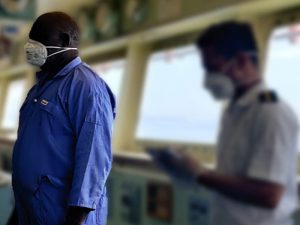
A recent posting on the USCG’s Maritime Commons blog indicates that the Coast Guard’s guidance for mask wearing protocols covers all types of commercial vessels operating on the U.S. Maritime Transportation System.
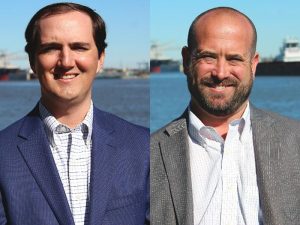
Mobile, Ala., based Cooper Marine & Timberlands (CMT) has promoted Strickler Adams to Director of Marine Logistics and has hired Alan Dodd as Director of Business Development. As Director of Marine Logistics,
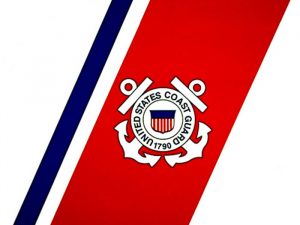
The U.S. Coast Guard is amending the requirements regulating personnel permitted to serve as a person in charge (PIC) of fuel oil transfers on an inspected vessel by adding the option of
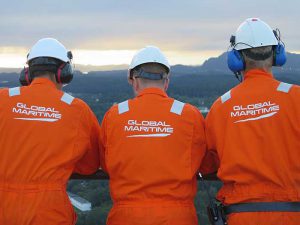
JANUARY 23, 2016 — Global Maritime Consultancy & Engineering has been approved by the U.S. Coast Guard to provide Subchapter M compliance services as a Third Party Organization (TPO). Global Maritime, a
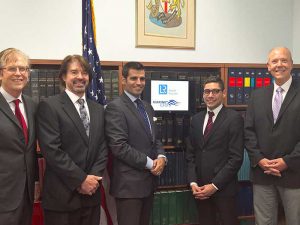
SEPTEMBER 19, 2016 — Lloyd’s Register (LR) has signed an agreement to work with Houma, LA, based software specialist MarineCFO to provide comprehensive solutions for compliance with Subchapter M. This follows LR’s
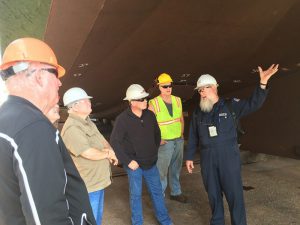
AUGUST 19, 2016 — The new Subchapter M regulations that will come into force in the summer of 2018 establish new requirements for the design, construction, onboard equipment and operation of towing
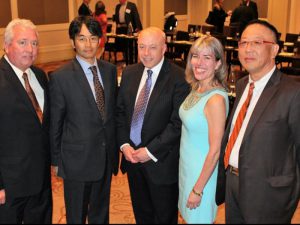
JUNE 29, 2016 — The American Waterways Operators and classification society ClassNK have signed an agreement authorizing ClassNK to conduct audits of AWO’s Responsible Carrier Program (RCP). The program is a safety
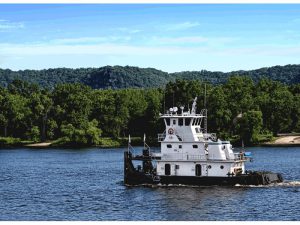
Countless Federal laws govern nearly every aspect of the inland waterways transportation industry, yet the convergence of the United States Coast Guard (USCG) Subchapter M impending Final Rule with Internal Revenue Services (IRS) Inland Waterways Excise Tax audit practices might have a more profound, far reaching impact then industry observers have as yet considered. Fortunately, it appears that taxpaying tow & barge operators may come out on top if they take full advantage of this unlikely Federal rulemaking interplay.
Background
The inland waterways constitute a 25,000 shallow-draft transportation system of which 12,000 miles are taxable Inland Waterways. This domestic waterborne transportation system is a prominent fixture in supporting key American industries such as: mining, agriculture, timber, petroleum and chemicals, cement, metal, and paper and allied products. Barging is a highly energy-efficient freighting solution that has historically been safe, congestion free, and creates a low impact land use and low pollution impact footprint. The movement of immense quantities of raw materials at low cost over long distances is the sustaining force of the waterways system. Stretching from Pennsylvania in the Northeast, to Texas in the Deep South, and Minnesota in the Heartland this “waterways highway” is a vital “import & export” network between states and an artery to foreign markets.
The economic impact in terms of product value transported between states on the inland waterways exceeds $100 billion annually. The 70,000 person inland waterways workforce underpins various industries of more than 800,000 workers. States along the inland waterways contribute 54 percent of the national population, 49 percent of GDP, 50 percent of Federal tax revenue, 56 percent of heavy manufacturing jobs, and 61 percent of agricultural jobs. Countless millions of payroll taxes are generated for Federal and State governments as a result of the inland waterways industry. The Inland Waterways Trust Fund has accrued in excess of $1.6 billion from fuel tax revenue since 1986 and is a catalyst for major construction and rehabilitation projects on the inland waterways.
Subchapter M is the result of the Coast Guard and Maritime Transportation Act of 2004 (CGMTA 2004) in which Congress authorized the Secretary of Homeland Security to create regulations for towing vessel safety management systems and hours of service for towing vessel personnel. The Towing Safety Advisory Committee (TSAC), a Federal Advisory committee to the United States Coast Guard comprised of a broad spectrum of interested parties in the inland waterways industry, established a working group to assist USCG in framing the rules required under CGTMA 2004. Over the course of six years TSAC conducted numerous public meetings that culminated in four TSAC reports submitted to USCG for review and revision. USCG published the Subchapter M Notice of Proposed Rulemaking (NPRM) in August 2011 and held four public hearings nationwide for public comment. Publication of the Sub Chapter M Final Rule is anticipated in 2016.
Objective Evidence
Objective evidence is best defined as documented statements of fact, other information or records, both quantitative and qualitative, related to the quality of an item or activity, based on observations, measurements, or verifiable tests.
The 2011 NPRM publication set forth the U.S. Coast Guard’s intent to adopt “objective evidence” as a safety requirement through “…detailed processes, procedures, recordkeeping and auditing…” documented in “logbooks, non-conformity reports, and/or other reports of audits.”
The Internal Revenue Service applies accounting’s “Objective Evidence” standard when conducting audits of towing operators for compliance with the Inland Waterways Excise Tax as reported on IRS Form 720. A typical IRS Information Document Request (IDR) to an inland towing operator will include the vessel log, fuel purchases, maintenance records, machinery tech manuals, and fuel operating reports.
Workboat eLogs
Federal law details what entries must be made by watch officers in the vessel’s official logbook. TSAC, in a 2008 report to USCG, reinforced existing recordkeeping requirements for inland towing operators and expanded upon the increased recordkeeping burden Sub Chapter M rules will likely have from a watch officer perspective. Although Federal law does not require log entries related to geographic position, waterway conditions, or commercial activities, it does require the logging of pre-departure testing of steering & propulsion, safety items & drills, crew, and marine casualties. Log entries must be timely and are presumed accurate thus binding the vessel owner to those entries. Negating the binding effect in litigation is held to a rigorous test. The maintenance of a proper and accurate log cannot be over-emphasized as the consequences for poor onboard recordkeeping can be legally and financially catastrophic to a marine operator.
Appreciating the increased onboard recordkeeping burden Subchapter M posed, the U.S. Coast Guard provided for the automation of the onboard recordkeeping processes through definition of a towing vessel record, or workboat eLog, in Part A Section 136.110 of the NPRM. This definition allows any onboard recordkeeping or documentation of events required by Subchapter M to be “a book, notebook, or electronic record”. Thus, according to the NPRM, inland towing operators have the advantage of adopting workboat eLogs as a primary recordkeeping tool.
Workboat eLogs and Marine Enterprise Solutions
While the presence of an onboard workboat eLog offers considerable advantage to watch officers and onboard auditors, it is only through the integration of the eLog with a shoreside marine enterprise solution that its benefits can be fully realized. The ability to “push” onboard data shoreside for interrogation by various marine enterprise solution modules offers an unlimited variety of analytical models for decision makers to consider.
The two distinct audit report functions of safety (USCG) and accounting (IRS) are easily achievable within the framework of a mature, interfaced onboard/shoreside recordkeeping solution. Of course, affordability, scalability, ease of user interface, system stability, and system configurability play an irreversible role in the success of a mature marine enterprise solution. It should also be noted that the presence of Key Performance Indicator data pushed by eLogs to the marine enterprise solution and applied to an industry best practices regime can only improve asset utilization, workforce performance, and customer satisfaction.
Conclusion
The unintended opportunities facing inland waterway operators by opting into the Subchapter M onboard electronic recordkeeping options in lieu of manual recordkeeping are hard to contest. These options are greatly enhanced if the marine operator also elects to interface office accounting, safety, and personnel functions with the vessel as part of a shoreside marine enterprise solution.
Adopting a software architecture and infrastructure where the marine operator can satisfy the reporting requirements of a multitude of Federal agencies (USCG, USACOE, IRS, EPA) through a single electronic reporting system which also provides critical commercial data to the carrier, clients, vendors, and other interested third parties offers immeasurable value.
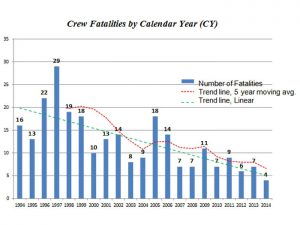
AUGUST 18, 2015 — The Coast Guard has released some of the findings from the report “Towing Industry Safety Statistics: 1994 – 2014,” which was presented at a July National Quality Steering